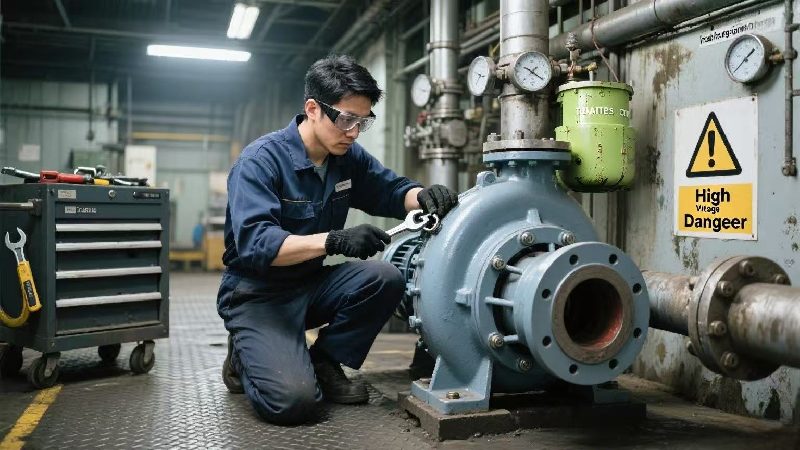Main Parameters of Centrifugal Pumps
2025-09-12
Main Parameters of Centrifugal Pumps
•Flow Rate Q (m³/h or m³/s)
The flow rate of a centrifugal pump refers to its liquid delivery capacity, i.e., the volume of liquid transported by the pump per unit time. The flow rate depends on the pump’s structural dimensions (mainly the diameter of the impeller and the width of the blades) and rotational speed. During operation, the actual volume of liquid that the pump can transport is also related to pipeline resistance and the required pressure.
•Head H (m)/bar
The head of a centrifugal pump, also known as the pump’s pressure head, refers to the energy obtained by a unit weight of fluid passing through the pump.
The head of the pump depends on its structure (e.g., impeller diameter, blade curvature) and rotational speed. Currently, the pump head cannot be accurately calculated theoretically and is generally determined by experimental methods. The pump head can be measured experimentally: install a vacuum gauge at the pump inlet and a pressure gauge at the outlet.
•Efficiency
During the liquid transportation process, the shaft power of the pump is greater than the power that the liquid discharged into the pipeline obtains from the impeller. This is because volumetric losses, hydraulic losses, and mechanical losses all consume a portion of the power. The efficiency of the centrifugal pump reflects the degree to which the pump utilizes the external energy.
The efficiency value of the pump is related to the pump type, size, structure, manufacturing precision, and the properties of the transported liquid. Large pumps have higher efficiency values, while small pumps have lower ones.
•Shaft Power N (W or kW)
The shaft power of the pump is the power required by the pump shaft, which can be calculated based on the effective power Nₑ of the pump and its efficiency η.

Key Maintenance Points for Centrifugal Pumps
Daily maintenance methods for centrifugal pumps:
(1) For the maintenance of centrifugal pumps, always pay attention to the pump’s sound and vibration. If abnormal noise or significant vibration of the unit is detected, stop the pump immediately, check for the cause, and eliminate it in a timely manner to prevent accidents.
(2) During centrifugal pump maintenance, always monitor the positions of the pointers of various instruments. If there is a sudden change, check for the cause. Generally, a sudden rise in the vacuum gauge reading is most likely due to an excessively low water level in the suction sump or blockage of the suction pipe by debris. A sudden drop in the pressure gauge reading is probably caused by a decrease in the prime mover’s rotational speed or air being sucked into the pump. After identifying the cause, take measures to eliminate it.
(3) Regularly check the bearing temperature and lubrication condition during centrifugal pump maintenance. For bearings lubricated by an oil ring, ensure the oil ring rotates flexibly. Add bearing oil in a timely manner to maintain an appropriate oil level—excessive or insufficient oil will cause overheating. The oil should be clean: generally, sliding bearings should have their oil changed every 200–300 hours of operation, but at least once every six months; rolling bearings should be inspected and refilled with oil every 1500 hours of operation. For new pumps, the oil should be changed in advance.
(4) During centrifugal pump maintenance, check if the pump stuffing box is functioning normally. There should be a continuous drip of water from the packing (usually about 30 drops per minute). If the drip rate is too high or too low, adjust the gland bolts to ensure the packing is properly tightened.
(5) Regularly check the suction pipeline, stuffing box, and other components for air leakage during centrifugal pump maintenance. If air leakage occurs, the pressure gauge reading will drop, and abnormal noise will be heard inside the pump. Take measures to prevent air leakage; otherwise, the water output will decrease, and in severe cases, the pump may fail to discharge water at all.




